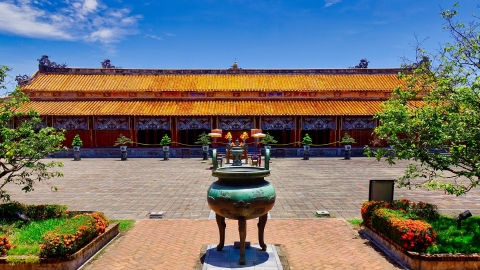The most expensive ancient hat in Vietnam
The event of the auction of the most intact Nguyen Dynasty mandarin hat ever, which was brought up for auction by the Invaluable auction house in Barcelona (Spain), has attracted special attention and follow-up from the public in the country. Surprisingly, after just over three days since the information was announced (October 22-25), someone placed a bid of 40,000 EUR, 80 times the starting price of the hat (500-600 EUR). In the official auction on October 28, the Nguyen Dynasty mandarin hat set an "unprecedented" record when it was priced one-thousand times higher, or 600,000 EUR (nearly 16 billion VND). Including fees and taxes, the total value of the ancient hat is more than 803,000 EUR, equivalent to more than 22 billion VND. With this price, this may be the Nguyen Dynasty official uniform with the highest "hammer price" in world auction history.
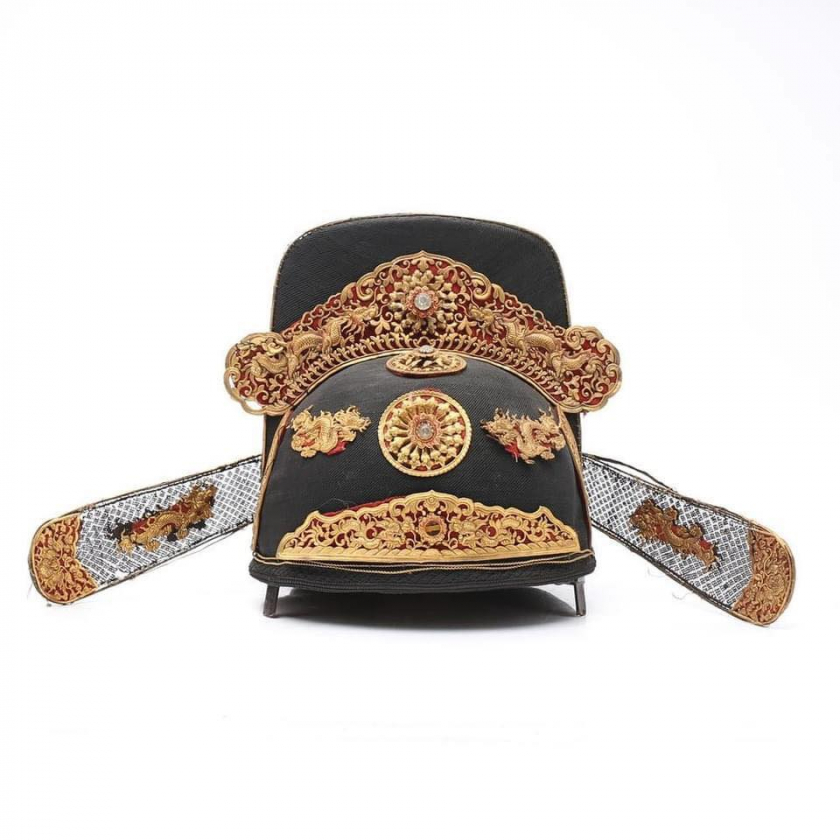
The Nguyen Dynasty mandarin's hat was priced at 600,000 EUR (16 billion VND) on October 28.
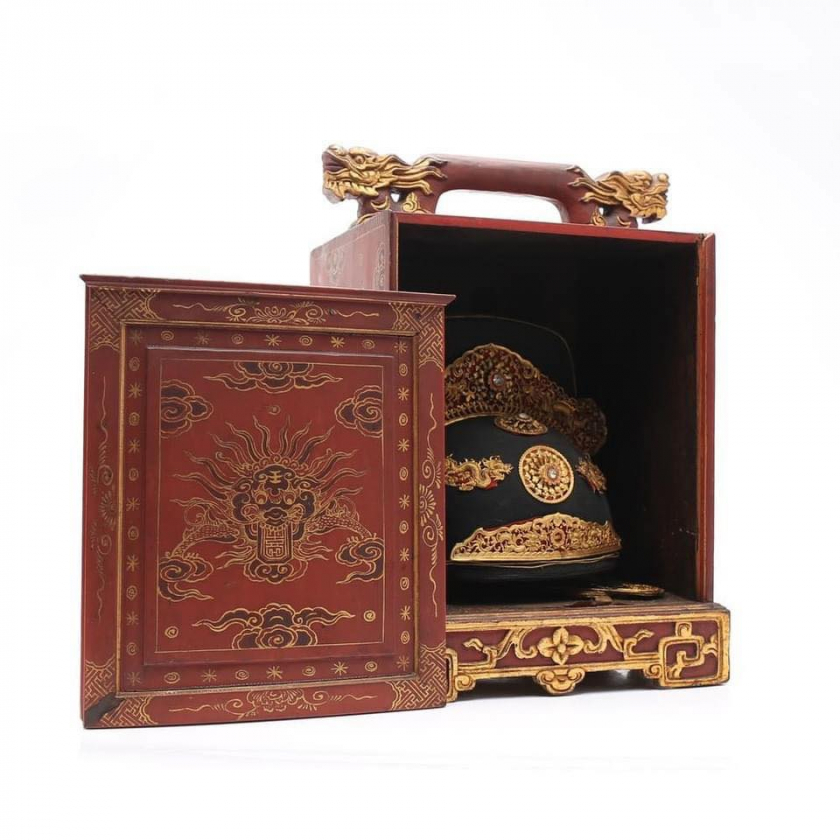
Photo: Labor Newspaper
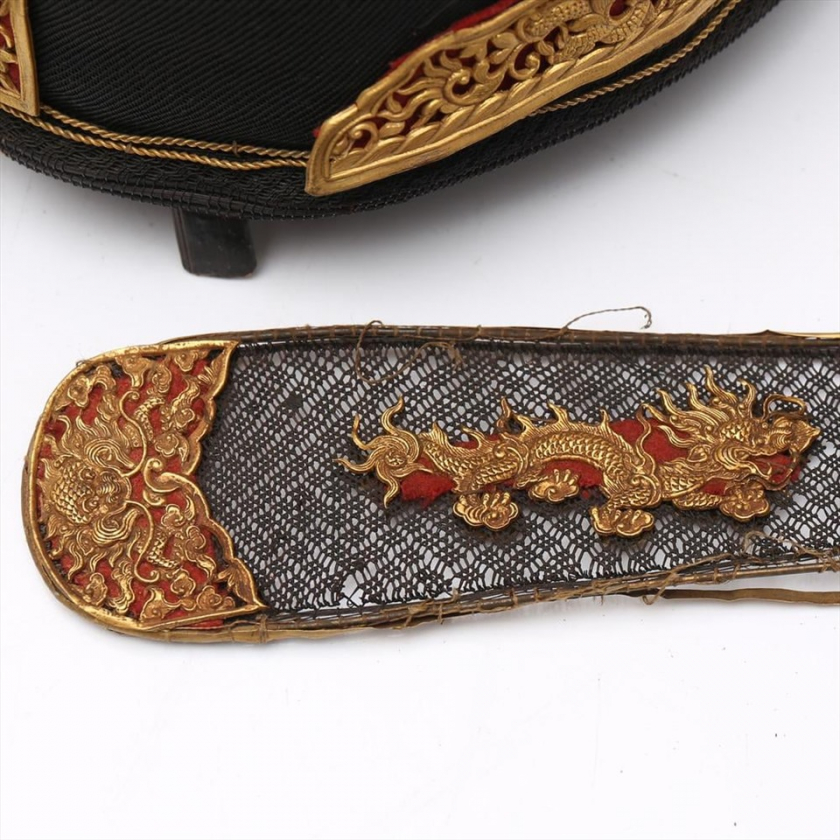
Photo: Labor Newspaper
Through the images, the Nguyen Dynasty mandarin hat is still intact, accompanied by a wooden box that is elaborately crafted with lacquer and gold plating techniques. Some museums in Vietnam have also displayed Nguyen Dynasty mandarin hats, but they are almost all restored artifacts. Researcher Tran Dinh Son said it can be inferred that the hat was taken abroad a long time ago, either by the French or given by Tu Duc's mandarins during their official trips.
In addition to the Nguyen Dynasty mandarin hat, two other Vietnamese antiques were also put up for auction: a Nguyen Dynasty royal tunic with four sacred animals and a pair of gilded wooden altars. The two antiques were priced at 35,000 EUR (about 930 million VND) and 1,750 EUR (more than 46 million VND) respectively.
Standing and looking at the relics that cannot be repatriated
While following the news from this auction event, many personal Facebook accounts and pages about Vietnamese culture and history expressed their hope that the hat would have a chance to return to Vietnam, and then felt regret when the auction results were announced. Many people also wondered why those working in the preservation of relics and culture in Vietnam, or more narrowly in Hue, did not take any action, while it was clearly an antique originating from Vietnam?
According to the leader of the Hue Monuments Conservation Center, the Center only monitors this matter and does not participate in the auction because the price is... too high. It is understandable that with such a huge auction price, even if they want the antiques to return to their homeland, Vietnamese auction houses have to accept leaving the antiques in a foreign land. So what about the Ministry of Culture, Sports and Tourism completely staying out of the game?
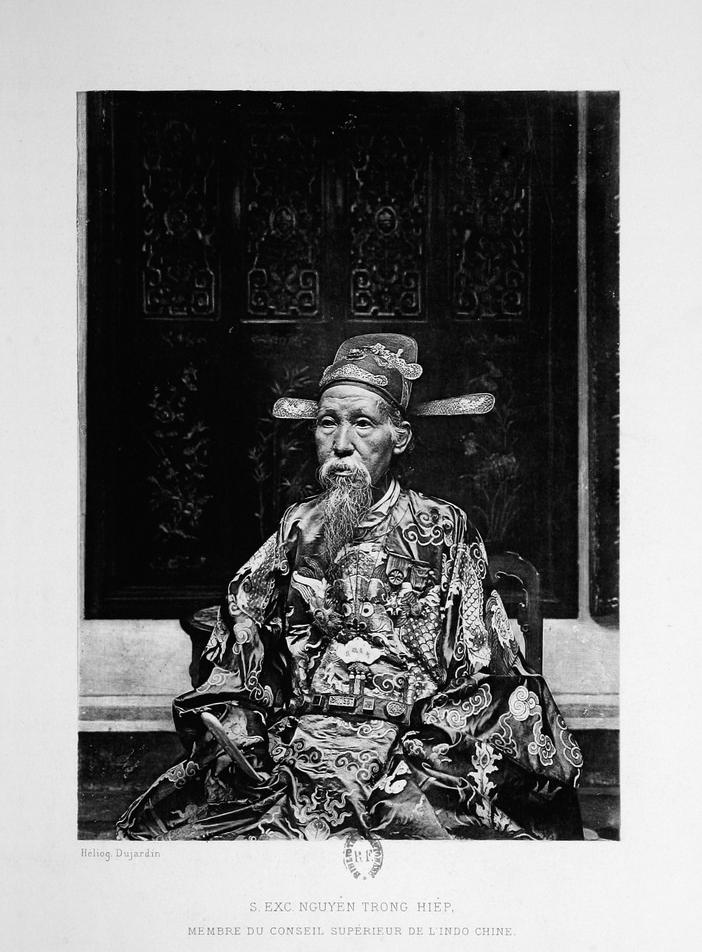
High-ranking mandarin Nguyen Trong Hop (Hiep) in Nguyen Dynasty mandarin uniform and hat. Mr. Nguyen Trong Hop (1834-1902) served under 7 kings from Tu Duc to Thanh Thai. (Photo courtesy)
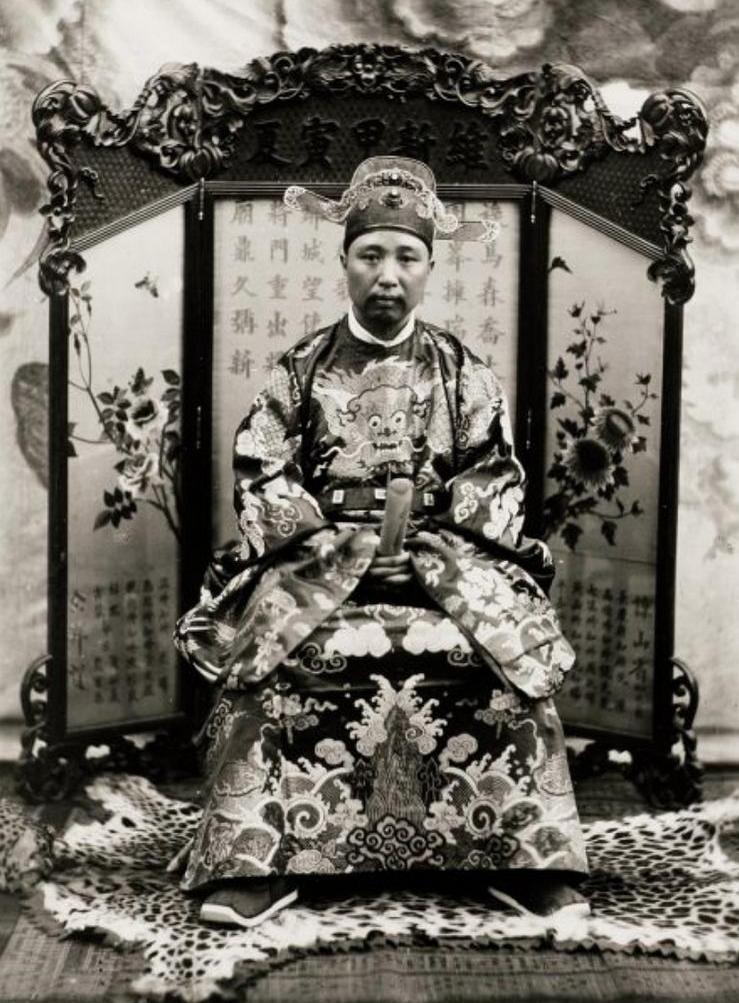
High-ranking mandarin Vi Van Dinh wearing his mandarin hat. Mr. Vi Van Dinh (1880-1975) was a Tay ethnic, Governor of Lang Son province, member of the Privy Council and the Tonkin Colony. (Photo courtesy)
Answering this question in an interview, Dr. Phan Thanh Hai, Director of the Department of Culture & Sports of Thua Thien-Hue province, former Director of the Hue Monuments Conservation Center, said: "Because the law does not have specific regulations on this issue." Currently, whichever agency is in charge of which sector monitors and is in charge of issues related to that sector. The Hue Monuments Conservation Center is the unit assigned to manage the Nguyen Dynasty heritage sector, so all related issues are under the responsibility of the Center.
In addition, Vietnam does not have a legal framework to allow organizations and individuals to participate in auctions of antiquities abroad. Information about Vietnamese antiquities abroad is still very limited, including antiquities for sale in auctions. At the same time, Vietnam does not have an appropriate policy to "repatriate" antiquities that are scattered abroad.
Previously, there were precedents of other Vietnamese treasures being exiled to foreign lands, including the Rolex Reference 6062 watch once owned by King Bao Dai, which was auctioned in Switzerland in 2017, or the oil painting "Chieu Ta" by King Ham Nghi, which was auctioned in France 11 years ago...
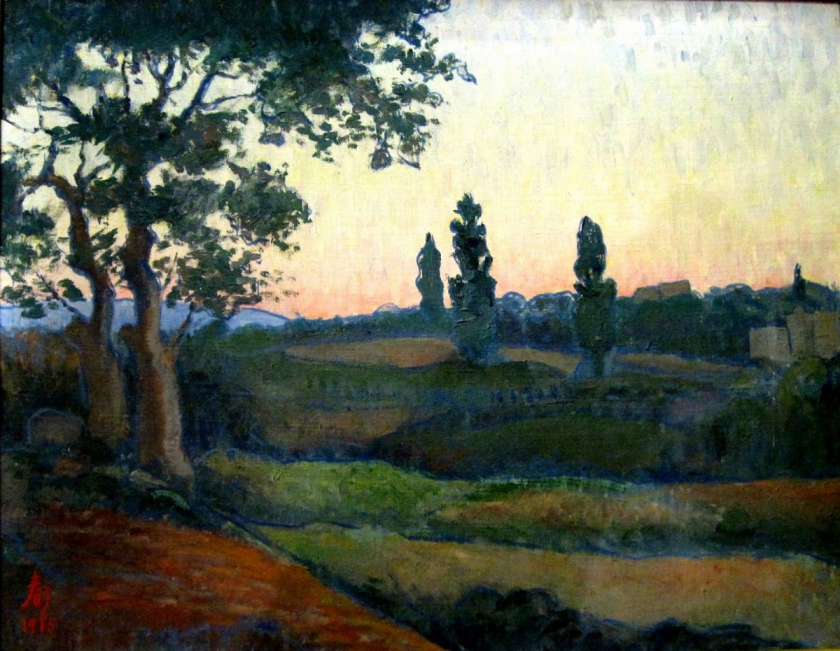
Oil painting "Sunset" by King Ham Nghi. (Photo: Internet)
"happy ending" for Vietnamese heritage
On October 30, a surprising piece of information was announced in Thanh Nien newspaper: the person who won the auction for the Nguyen Dynasty mandarin hat was a Vietnamese businessman. Specifically, the auctioneer with the "mysterious" code 5496 is a businessman who is very passionate about Hue, so he was determined to auction this valuable mandarin hat to bring the artifact back to the country. "The person who successfully bid for the artifact did not want to disclose the information for personal reasons. Perhaps in the near future, when the time is right, they will definitely make a formal announcement" - Thanh Nien newspaper quoted.
Whether this antique hat will actually be returned to Vietnam or not, no one can be sure. The most obvious thing we see at present is that this auction has created a media effect and community interest in the issue of preserving national antiques. Public opinion has gradually increased questions, awareness and voiced out issues related to the country's history, culture and heritage in a deeper way. From those concerns, those working in heritage and cultural conservation have more reasons to think and act,proactively, for the future of Vietnamese cultural heritage.
According to information from Dr. Phan Thanh Hai, in the next revision, the Law on Cultural Heritage will begin to include this issue in discussion and research. This continues to open up hope for the "repatriation" of the country's antiques in the future - not relying on individual donors with the unimaginable amount of money they spend, but from the joint efforts of the whole group, like the way Vietnam tried to bring the 108-year-old rickshaw of Queen Mother Tu Minh (mother of King Thanh Thai) from France to Hue in 2014.






















